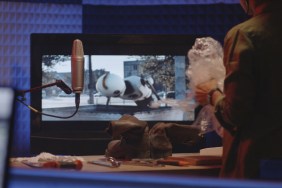Back in the early days of the internet – say 1995 or 1996 – there was an overwhelming sense of freedom hovering over the new medium. Here, it was often said, was a communication tool that is run entirely by the people. Sure, you may have to buy internet hours from a new media conglomerate (who remembers getting those unsolicited “Free Hours!” CD-ROMs in the mail?), but when it came to all of the content on the internet, nothing was regulated or double-checked. You could post anything you want, share it with anyone, and have a permanent record of any and all conversations. Provided there was enough bandwidth.
Of course, eventually, streaming technology entered the internet zeitgeist, and music and movies could suddenly be shared with relative ease. This was an enormous upset to any and all corporations who owned the rights to said movies and music. Throughout the early 2000s, as the internet continued to grow, companies had to race like mad to find a way to commodify a previously-lawless land of media sharing. It was a time when the music industry pretty much imploded, and the actual owning of physical VHS tapes, DVDs, and the then-new Blu-rays was becoming gauche. Why pay, when you could rip off movies for free?
Here in 2016, the corporations have found what they want: A newfound dominance of the media. Now we have Netflix and Hulu and other such corporate streaming services giving us unlimited movie and TV privileges for only a small fee every month. Music can now be downloaded a song at a time. Even if an enterprising fan puts a licensed video on YouTube, circumventing the corporate royalty game, they are either immediately zinged by an increasingly savvy team of lawyers, or, at the very least, YouTube is getting a dime for every view, as YouTube slaps commercials in front of just about every video now.

Hulu
The wild, lawless days are long over, of course. The big companies have long ago found a way to make money from online distribution, and consumers are pleased as punch to have unlimited entertainment piped directly into their homes. Millions of movies and TV shows are now essentially living in your TV set, waiting to be watch at a moment’s notice. That any one TV show can become popular in such an environment is something of a miracle. People have, as such, purged their physical media collections long ago. There is, you see, no need for them any longer. Indeed, some young people can’t even fathom a world wherein Blu-rays are even necessary. It’s all on streaming now, gramps. Get with the times.
Yes, the convenience of a large online library of films and TV shows is the reality of the modern age. It seems like there’s nothing you cannot get. Nowadays, the biggest fear of the maker of a TV show is that their product will get lost in a sea of options. The Paradox of Choice is the basis for the modern entertainment ethos, and films have had to become larger and larger – and more familiar – to combat this. Why do you think Marvel movies are doing so well?
But there is a vital error in relying on online streaming services for your infinite entertainment: The collection is not permanent.

Netflix
Just last night, my wife and I, eager to get in the Halloween spirit, decided to eschew the films in our own personal video collection to seek a perhaps-unsung classic on Netflix. Browsing through the ill-organized collection of horror films, we encountered seven or eight well-known horror classics (Hellraiser was on there, for instance), and about 200 straight-to-video horror movies that were made no earlier than 2013. I cannot speak to the general quality of these films – I certainly haven’t seen them all – but that certainly wasn’t what my wife and I were looking for. Too lazy to venture up the street to the local video store (yes, we still have a local video store), we watched one of my own personal DVDs instead: My three-disc limited edition of Dario Argento’s Suspiria.
It occurred to me then that physical media not only still has a place in the movie marketplace of 2016, but that’s it’s still absolutely necessary.
As corporate entertainment giants take more and more control over what we have access to, we find ourselves relying more and more on a movie library that shifts more and more to what sells, and less and less on the pure notions of archiving. In the early days of the internet, before anyone was making money off of movies, there was a tendency to archive and record everything. That’s kind of how the Internet Movie Database got started. We needed a tangible list of all movies and TV shows. We needed to keep this all straight. When online movie libraries began popping up, there was still an incorrect notion that that’s what these libraries would also be doing. Storing all movies online. Turning the internet into the world’s biggest video store.
But we all know that’s not the way it works. One streaming service will have the horror movies you want. Another will have the TV you want. Yet another might be the only place to get Criterion videos. And only one app has reruns of Joe 90.

ITC Entertainment
This anti-archiving mentality flies in the face of true cinema buffs. It’s a model that may work well for casual consumers of pop TV, but for those adventurous souls who are looking for the greatest of cinema to be in one place, it’s incredibly frustrating. Certain films will pass out of the online rotation, and some may never be seen again, if they never sold.
The best way to make sure you have permanent access to the great films of the world is – even in 2016 – to buy them in physical form. If you have a DVD, you don’t need to worry about whether or not Netflix is going to can that movie at a future date. Or if its distribution rights will pass to another company, and that new company will elect not to spread it around. As dated and outmoded as it may sound, you need a physical copy – your own personal copy – to ensure your immediate access to it.
In the past – since I’m sometimes a bit of a Luddite – I have argued that physical media needs to stay relevant because of the funny old aesthetics of a tape or a disc, and because of the halcyon woo-woo feelings you get from holding something that’s yours. These arguments are all well and good up to a point, but it can be a mistake to fetishize a format or a medium in deference to the film itself; I no longer care what format you see it on, just get around to 2001: A Space Odyssey at some point.
What we have now, though, are practical archiving concerns. Even though most theatrical films are presented digitally, most studios still make physical film prints of them more archiving purposes. We should follow suit. Even if we have access to a show on Netflix doesn’t mean it will always be there. If a film is dear to you, don’t be shy about buying a DVD of it. Or putting it on an external hard drive that’s kept in a safe place.
Just in case.
Top Image: Universal/DVD FLLC
Witney Seibold is a longtime contributor to the CraveOnline Film Channel, and the co-host of The B-Movies Podcast and Canceled Too Soon. He also contributes to Legion of Leia and to Blumhouse. You can follow him on “The Twitter” at @WitneySeibold, where he is slowly losing his mind.






